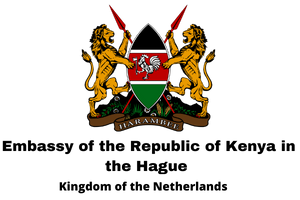Import and Export Procedures
Overview
The Government has introduced incentives that serve to streamline procedural operations. The process of establishing a business in Kenya is now more efficient due to key changes in policy and legislations.
Manufacturing
Kenya has a relatively strong manufacturing sector. Our manufactured products have access to several large export markets such as Common Market for East and Southern Africa, (COMESA), and the Far East. The country’s membership in the COMESA makes it an attractive base for companies looking to access the East and Central African markets. Exports from Kenya also enjoy preferential access to both the United States and the European Union.
Some key Kenyan manufacturing sub-sectors include galvanized iron sheets, mineral fuels, in organic chemicals, clothing, salt and sulfur. The majority of these products have seen increase in production value between 2005 and 2006. (See the chart below)
Total Global Exported value chart 2004/2006
| Article & Exported Value in Euro thousand | 2004 | 2005 | 2006 |
| Mineral fuels, oils, distillation products, etc | 495,499.72 | 288,186.28 | 137,848.94 |
| Salt, sulfur, earth, stone, plaster, lime and cement | 95,809.37 | 59,094.79 | 55,293.53 |
| Iron and steel | 73,105.77 | 66,704.46 | 53,626.63 |
| Ceramic products | 1,813.72 | 2,486.77 | 48,232.68 |
| Raw hides and skins (other than fur skins) and leather | 23,378.12 | 37,858.05 | 43,272.57 |
| Inorganic chemicals, precious metal compound, isotopes | 5,469.29 | 38,780.66 | 39,258.95 |
| Paper & paperboard, articles of pulp, paper and board | 33,536.86 | 25,759.82 | 27,049.34 |
| Plastics and articles thereof | 41,971.12 | 22,307.89 | 25,355.37 |
| Vehicles other than railway, tramway | 11,897.69 | 24,144.26 | 20,293.37 |
| Pharmaceutical products | 22,632.05 | 20,589.55 | 18,452.14 |
Source: International Trade Center – Trade Map
Exports
Kenya’s Export Processing Zones Authority (EPZA) export chart indicates that, in 2004, 47.5 percent of Kenya’s exports went to Africa, while 27.9 percent went to Europe.
The highest exports in 2006 came from Mineral fuels, oils, and distillation products. More specifically, these include coal and petroleum products. In 2004, the Netherlands alone imported Salt, sulfur, earth, stone, plaster, lime and cement from Kenya.
Reforms
The Government made several Reforms that stimulate the economic growth. Trade policies in Kenya have evolved over time, changing from an inward looking import substitution policy regime to the existing one whose primary objective is the promotion of exports of consumer and intermediate goods, while at the same time laying the base for eventual production of capital goods for both domestic and export markets.
The incentives to promote growth in these areas include the following:
- The duty and VAT remission
- Manufacturing under bond scheme
- Export processing zones
For more information click: http://www.tradeandindustry.go.ke
Privatization
As part of privatization and restructuring of parastatals, the government has reduced its share holdings in the Kenya Commercial Bank, the National Bank of Kenya, Serena Hotels and Kenya Airways.
These changes have already been implemented in Kenya Ports Authority (KPA) and Kenya Railways (KR). Within the energy sector, Kenya Electricity Generating Company (KenGen) and the Kenya Power and Lighting Company (KPLC) have been reformed. These reforms have also affected the Postal Corporation of Kenya and Telkom Kenya Ltd, amongst others.
Investment Opportunities in Kenya
For further investment opportunities can be obtained in the following websites
- East African Cables: http://www.eacables.com
- Export Promotion Council: http://www.epckenya.org
- Export processing Zones: http://www.epzakenya.com
